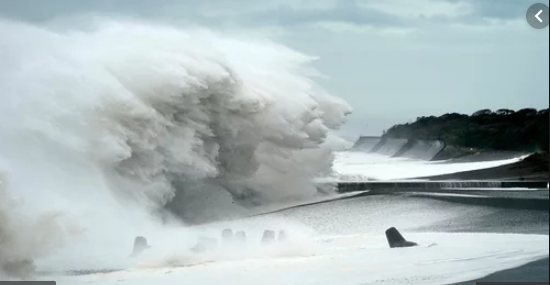
The storm made landfall Saturday evening. Record rainfall flooded rivers and tested dams as almost four million people were urged to evacuate.
By Motoko Rich and Ben Dooley
TOKYO — Typhoon Hagibis, Japan’s largest storm in decades, lashed the country’s northeast early Sunday morning, just hours after hitting the Tokyo region with heavy rain and high winds that forced many residents to move to evacuation centers.
Record rains flooded rivers, pushed dams to their limits and caused several landslides. An earthquake measuring 5.7 magnitude also shook Chiba, east of Tokyo, early Saturday evening.
One death was reported in a cyclone in Chiba, and NHK, the public broadcaster, reported that another person died after a landslide crushed his home in Tomioka City in Gunma Prefecture, northwest of Tokyo. Thirteen other people were missing, NHK said. Landslides were also reported in Sagamihara, a suburb of the city, and in Shizuoka, a coastal city to the southwest.
The storm made landfall around 7 p.m. on Saturday in Ito, a resort town on the Izu Peninsula, also southwest of Tokyo.
By midnight, the rain and wind had moved past the capital, leaving some flooding in the city’s west.
The Japan Meteorological Agency said Saturday afternoon that sustained winds from the typhoon had been measured at about 100 miles per hour, with gusts of up to 135 miles per hour, landing the storm in the third-strongest category.
By Saturday night, NHK reported that local governments had ordered 3.9 million people to evacuate their homes. That included 432,000 people who had been advised to leave the Edogawa ward of Tokyo because of fears of heavy flooding. In Kawasaki City, outside the capital, more than 900,000 people had been urged to evacuate, according to NHK.
Tokyo Electric Power Company said that as of midnight 432,000 households were without power across Tokyo and Shizuoka.